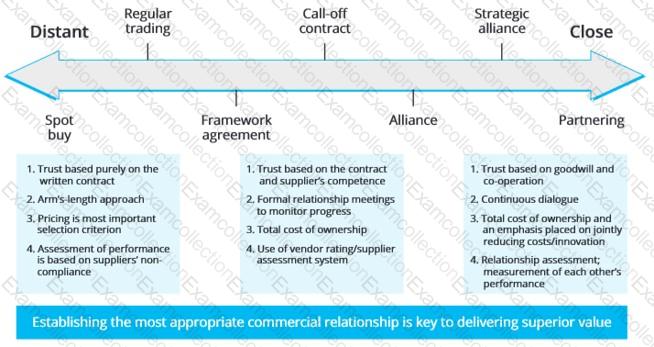CIPS L4M5 - Commercial Negotiation
A negotiation meeting between a buyer and supplier has taken several hours. Both parties believe the negotiation is starting to reach a close. Before the supplier makes their closing statements, they are most likely to be doing which of the following?
Effective listening is important in integrative negotiations. Is this statement correct?
End users are the only stakeholders that are involved in the preparation of a negotiation. Is this statement true?
Which of the following are stages within the negotiation process?
Planning and preparation
Arguing and persuasion
Accepting hospitality
Testing and proposing
Professional buyer is planning for the next negotiation of a simple one-off contract. This negotiation is typified by which of the following? Select TWO that apply.
Community Meal Partners (CMP) is a not-for-profit company that delivers cooked meals to older residents in their homes. CMP uses a fleet of bespoke vans with onboard ovens. In planning the future procurement of the fleet, CMP has conducted a review of the microeconomics of the van supply market and found that the vans are supplied by a monopoly supplier due to patented technology. Which of the following strategies could CMP utilise to optimise its bargaining position with the van supplier?
Which of the following should be done by the procurement team at the closing stage of a negotiation? Select TWO that apply.
Which of the following is most likely to be a reason why a supplier charges its customer higher price after it has reached the break-even point?
A public agency opens a tendering process for a road building project that lasts approximately 1 year. They post their requirements on public journal and receive some interests. After conducting due diligence process and selecting the lowest bidder, the project commences. However, the supplier complains that price of material increases because of a shortage of supply, then they demands an 5% uptick in contract value. The agency investigates the increment and sees that there is indeed a fluctuation in prices of supplier's input. They are likely to accept the proposal, but they are also concerned that supplier may demand more. To avoid making another concession with the supplier, which of the following should be a priority action of the agency?
An automotive company purchases high quality steel to produce components. The steel is an important raw material and the contract value is enormous. They sources the steel from oversea and contact some potential suppliers. One of the potential suppliers invites the procurement team to their premise for a new business opportunity. Should the procurement team accept the invitation?



 Timeline Description automatically generated
Timeline Description automatically generated